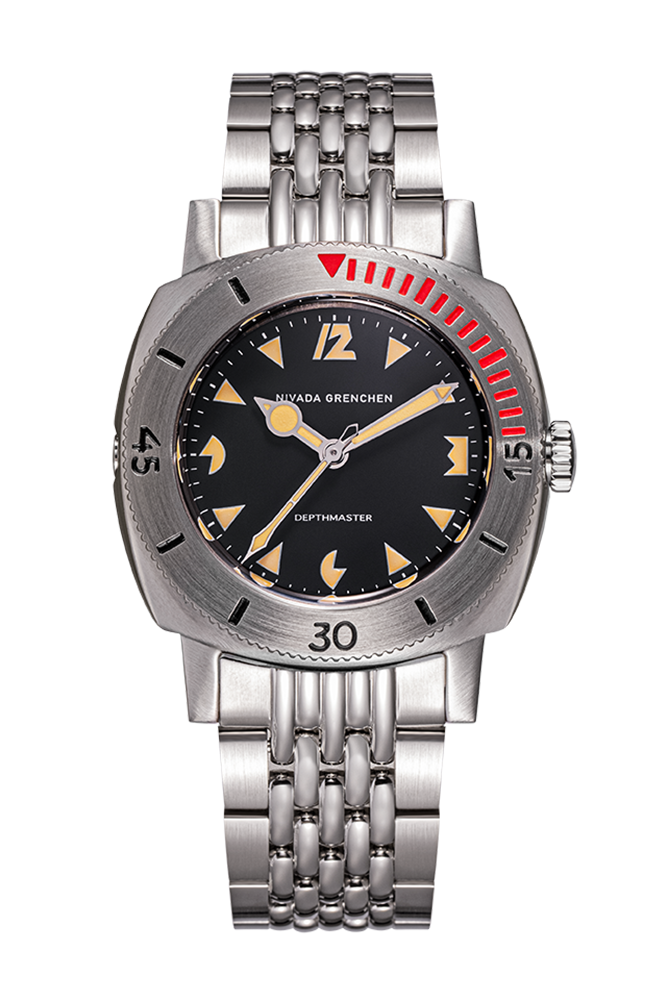Popular vintage Nivada Grenchen watches

Published: Oct 03, 2021
As iconic vintage wristwatches from Swiss brands have become more and more unattainable, savvy watch collectors have turned to hidden corners of the pre-owned watch market, discovering underrated watches from the past that were all but forgotten about. These include wristwatches manufactured by the likes of Nivada Grenchen. Many brands like Nivada are victims of the quartz crisis which swept throughout the luxury watch industry during the 1970s, sending many manufacturers into early demise. So many watchmakers were unable to compete with the growing quartz watch market and were swallowed up whole, or at the very least, had to sell many of their watches, skilled technicians or components to larger brands to survive the devastation. One of the gems from this era was Nivada who was not revived until recently. Before then, however, the manufacturer had developed some highly desirable watches, many of which have become collectable vintage pieces on the pre-owned market today.
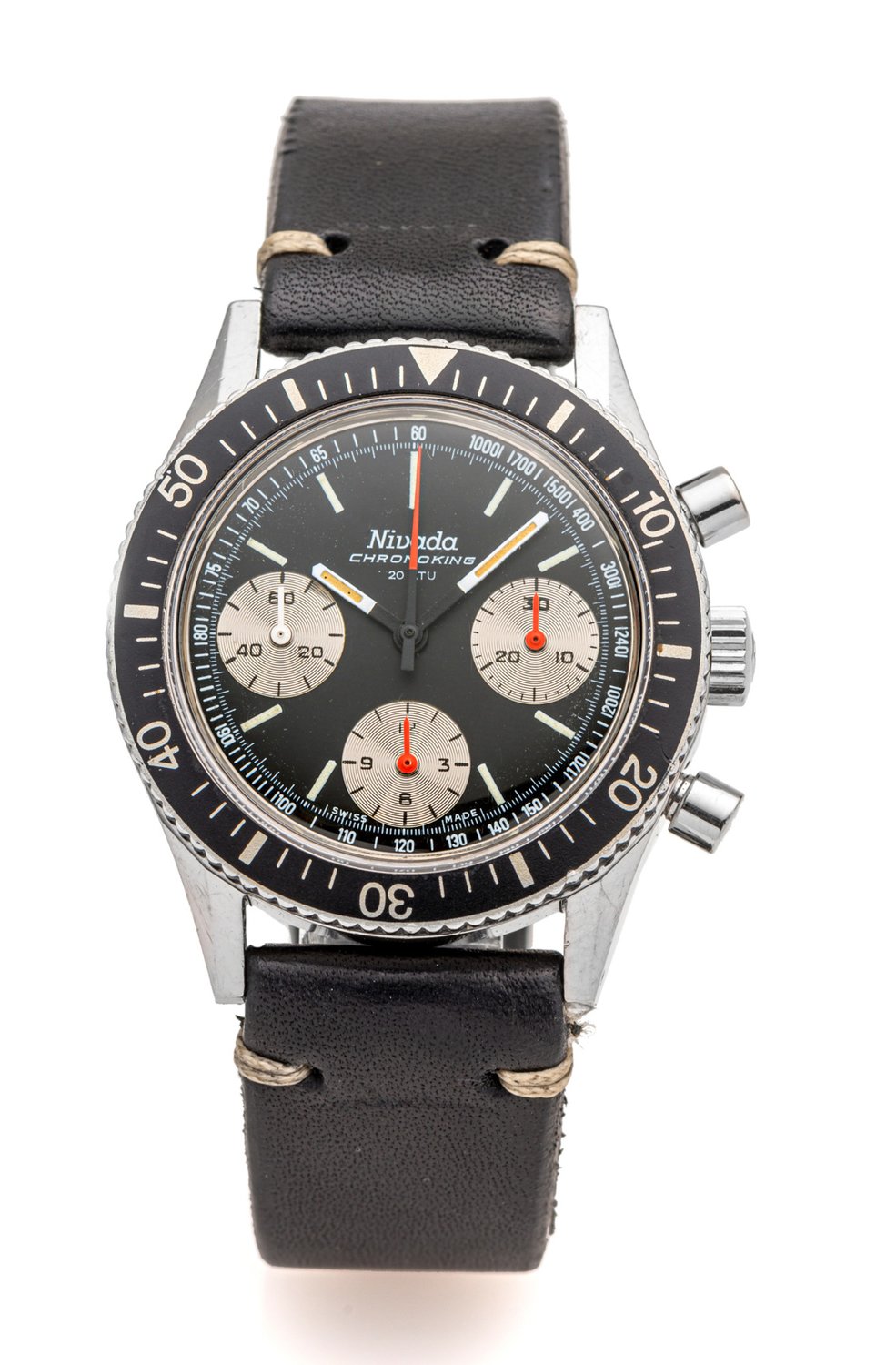
Robust and Reliable
Robust, reliable wristwatches were Nivada’s speciality – many of which have resurfaced in new forms since the brand relaunched, reinvigorating its heritage watches based on archives from its catalogue. That’s great news if you want the appeal and look of a vintage watch but prefer the robust and reliable guarantee of a modern wristwatch. Nivada has been reproducing versions like the Antarctic since it resurfaced. But for some, nothing other than a true vintage watch will do. You get the autonomy and provenance of a brand in a true vintage watch, Made from original materials and design features that had not yet succumbed to modern technologies – these watches are the real deal – true vintage timepieces. Here is an outline of Nivada’s history along with a run-through of some of the brand’s most popular vintage watches to date.
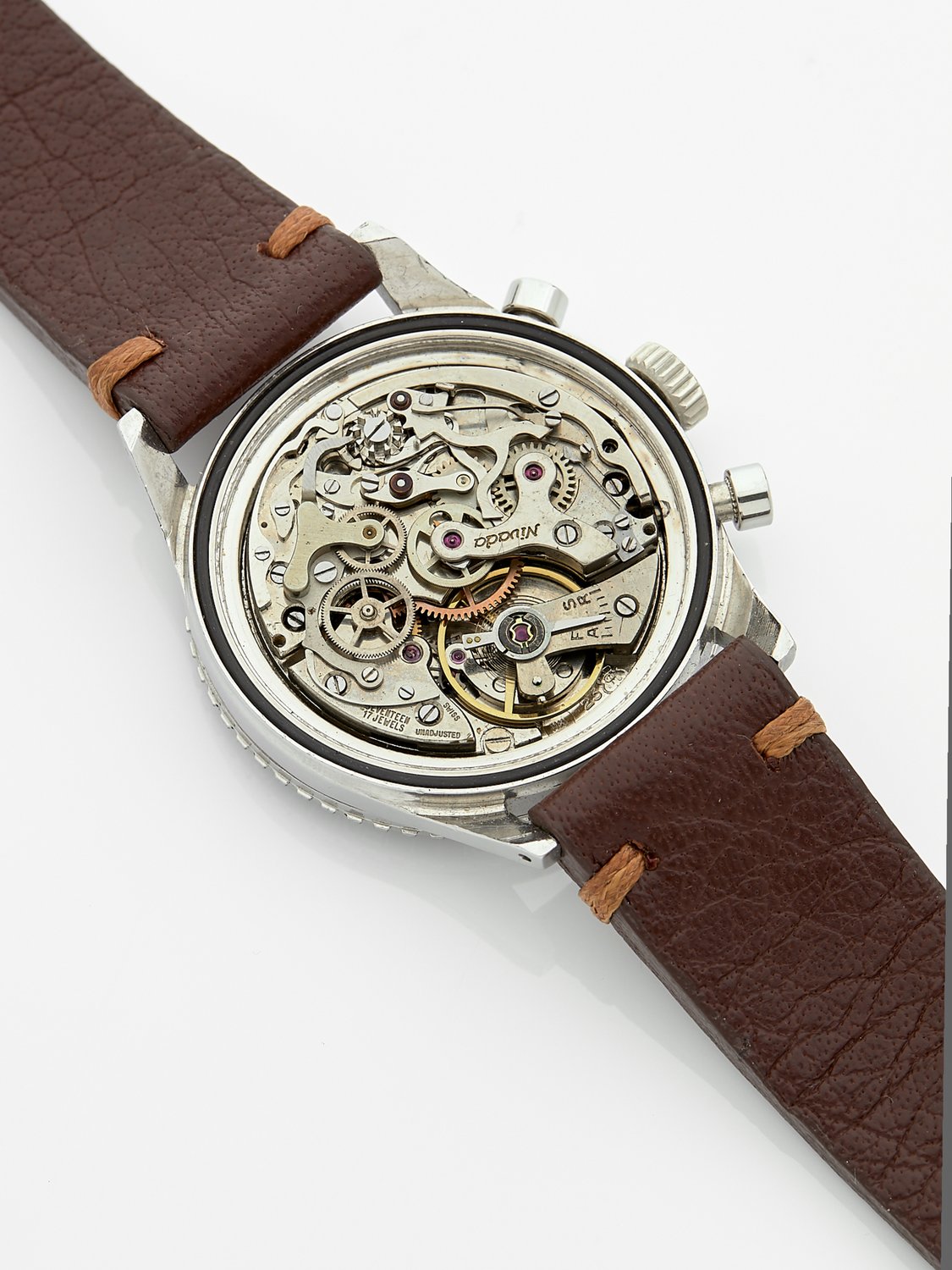
Founded in 1926 by Jacob Schneider.
To fully appreciate the appeal of Nivada’s original tool watches built for diving and extreme exploration, it is firstly worth delving into the history of the brand. The company was first founded in 1926 by Jacob Schneider. In 1976, his son Max Schneider took over the company which had already produced its first waterproof automatic watch at this point. The model was named the Antarctic. This watch would go on to be worn on the wrists of those involved in the US Navy’s Deep Freeze 1 mission to the South Pole from 1955 to 1956.
The lugs that attach to the strap of the Antarctic watch were part of the case and crafted from stainless steel. A rotating bezel made it possible for the wearer to measure elapsed time, whilst the hour markers and hands were highly luminous for easy readability in the dark. With a heavy-duty diver’s strap and a date window at 3 o’clock, the Antarctic watch was both innovative and practical for its time and gained Nivada its reputation for producing robust and reliable watches.
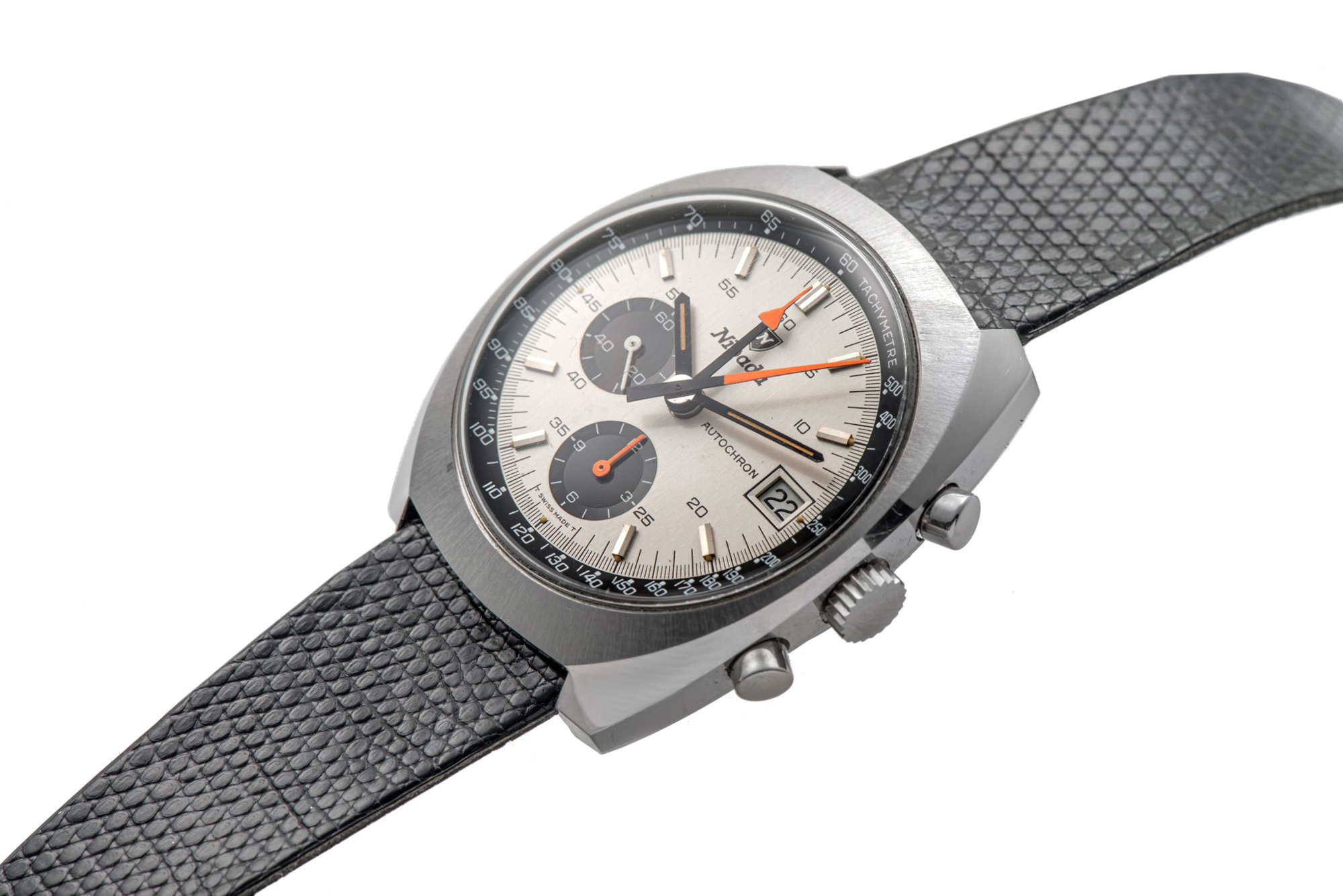
Nivada Chronomaster: 1963
In 1963 Nivada released a waterproof chronograph watch named the Chronomaster. The series was home to three sub-categories named the Sea Diver, the Aviator and the self-titled Chronomaster. Just a year later the Depthomatic watch was launched with a depth indicator or bathymeter built into its design. This was superseded by the Depthmaster watch with a design that could withstand pressures of up to 1000 meters underwater. For its time, this watch was a breakthrough within the dive watch industry, with very few brands able to compete with the technology and know-how needed to achieve such a robust and practical tool for professional and amateur diving.
During the 1950s Nivada Grenchen was using Valjoux 92 for its early Chronomaster models, as well as Ebauches SA calibres. The addition of a reliable and accurate movement made the Nivada Grenchen Chronomaster a huge success right up to the 1970s, where it then ceased production. During its run, it underwent some key changes including the shape of the hands from dauphine to arrow-shaped and then to tritium-treated stick indexes. The Nivada Grenchen logo also changed to an N letter inside a shield. The movement inside a Nivada watch changed from the Valjoux 92 to the Valjoux 7733 also.
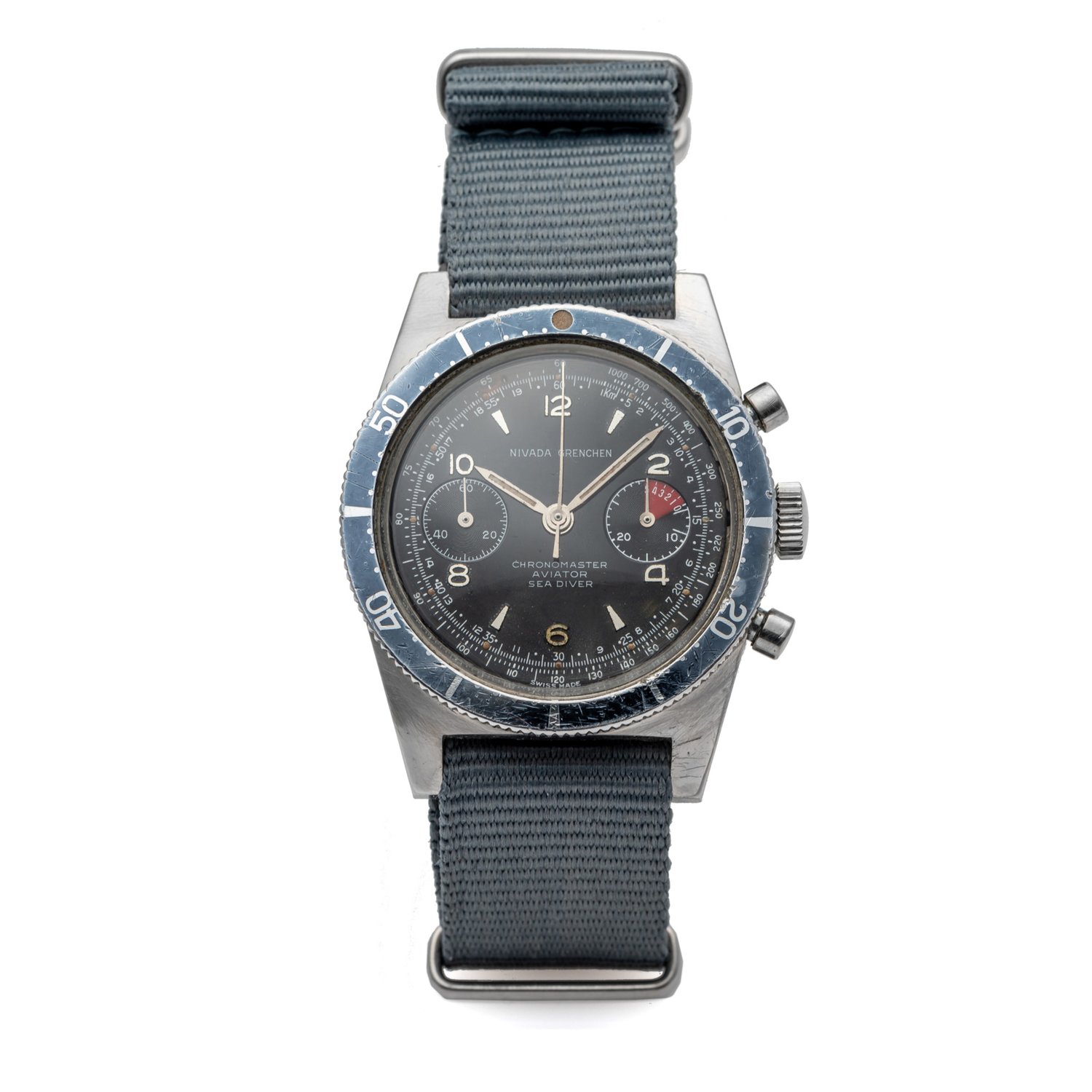
Quartz Crisis
The biggest challenge that Nivada faced, however, was the quartz crisis during the 1970s. To overcome this, the company tried to broaden its choice of watch designs to compete with the popularity of the quartz movement, but by the 1980s was considered unprofitable. When the company reopened in 2018, it launched with re-editions of these popular favourites. Vintage watches from its past, however, still prove incredibly popular.
Nivada Antarctic
Nivada’s first automatic-powered wristwatch was the Antarctic. It was also water-resistant. Born in 1950, the dive watch was originally intended to accompany the wrists of the American Navy’s Deep Freeze 1 expedition team. Able to face frigid weather exploration, the watch was built for the same level of exploration and extreme conditions as the Rolex Explorer (or Oyster Perpetual). The watch was created to commemorate Nivada’s accomplishments in exploration. Although the brand was named Nivada, its watches were barred from bearing the name on the dial without the addition of the Grenchen name next to it, to avoid confusion in America with the Movado watch brand. Still, watches like the Antarctic had a very distinct look and feel of their own.
The model was designed to support the US Navy’s “Operation Deep Freeze” mission and features a vertically-brushed dial in silver, which varied from many of the sunburst dials around during this time. This design feature was intended to evoke drifting snow. The steel case gently tapers into lugs and the hands are beautifully shaped into a dauphine profile. Showing the Antarctic base is the golden medallion showcased on the back of the case, adorned with mountains and stars. The watch is fitted on a brown lizard strap and features a 34mm diameter. Inside the case is the tried and tested ETA 2472 movement with a bi-directional winding and “quickset” date in red numerals showing at 3 o’clock on the dial.
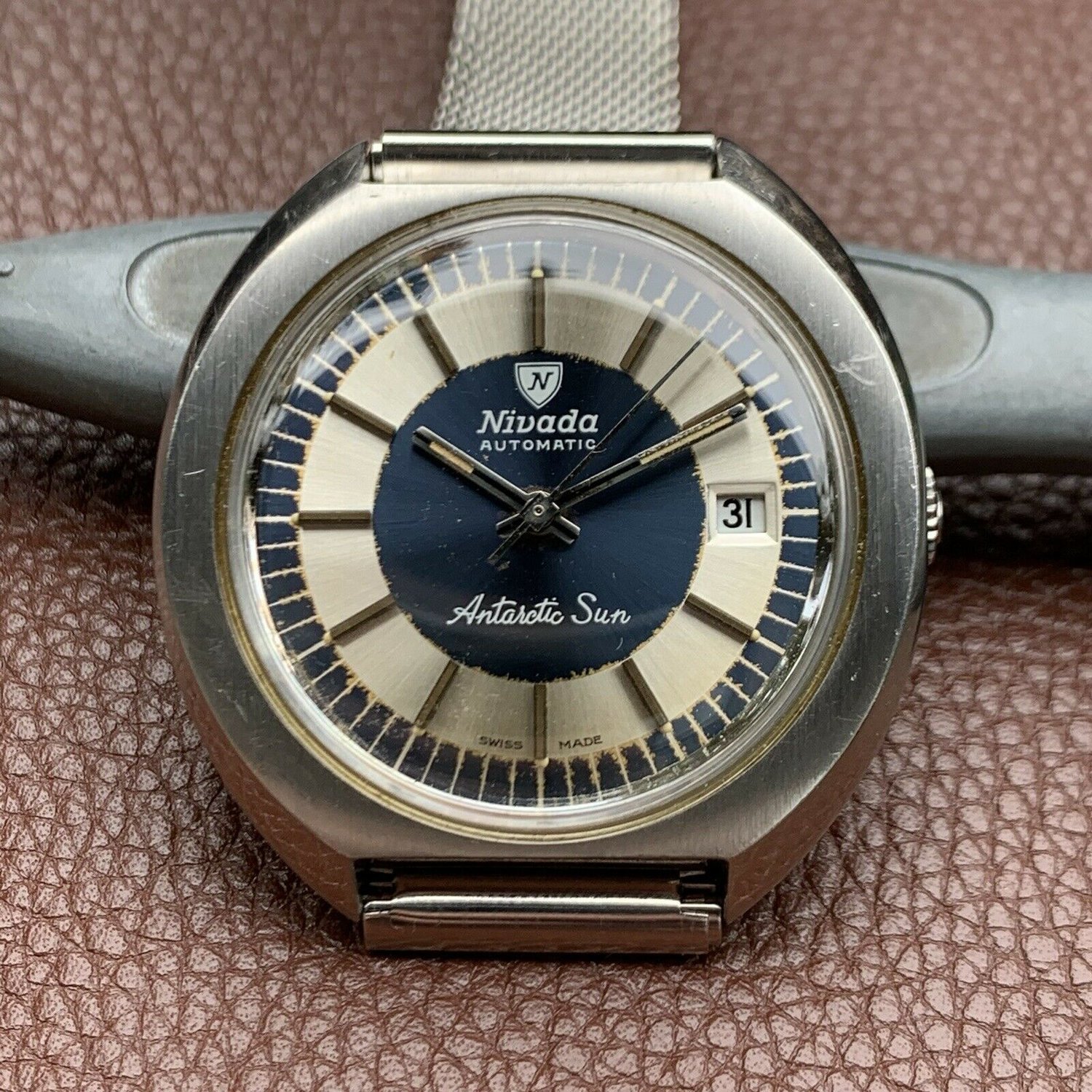
Nivada Depthomatic Skin Diver
The Nivada Grenchen Depthomatic watch from 1964 is a particularly rare wristwatch. It was the first mechanical wristwatch fitted with a depth gauge. A water tube around the watch’s glass fills with water through a hole at 3 o’clock when underwater. As the water and thus the pressure increases, the tube fills with more water and the liquid also changes to a red hue to enhance readability. With a depth up to 300 metres shown in red on the dial of this Nivada Depthomatic watch, the model proves to be a particularly technical and capable underwater timekeeping instrument for its time. The 38mm stainless steel case of this dive watch exudes retro charm, and although it should not be used for diving today, the watch is particularly hard to come by on the pre-owned market, adding to its desirability. The Depthomatic Skin Diver offers real vintage character and charm and boasts the “skin diver” and “waterproof” lettering at the base of the dial at 6 o’clock.
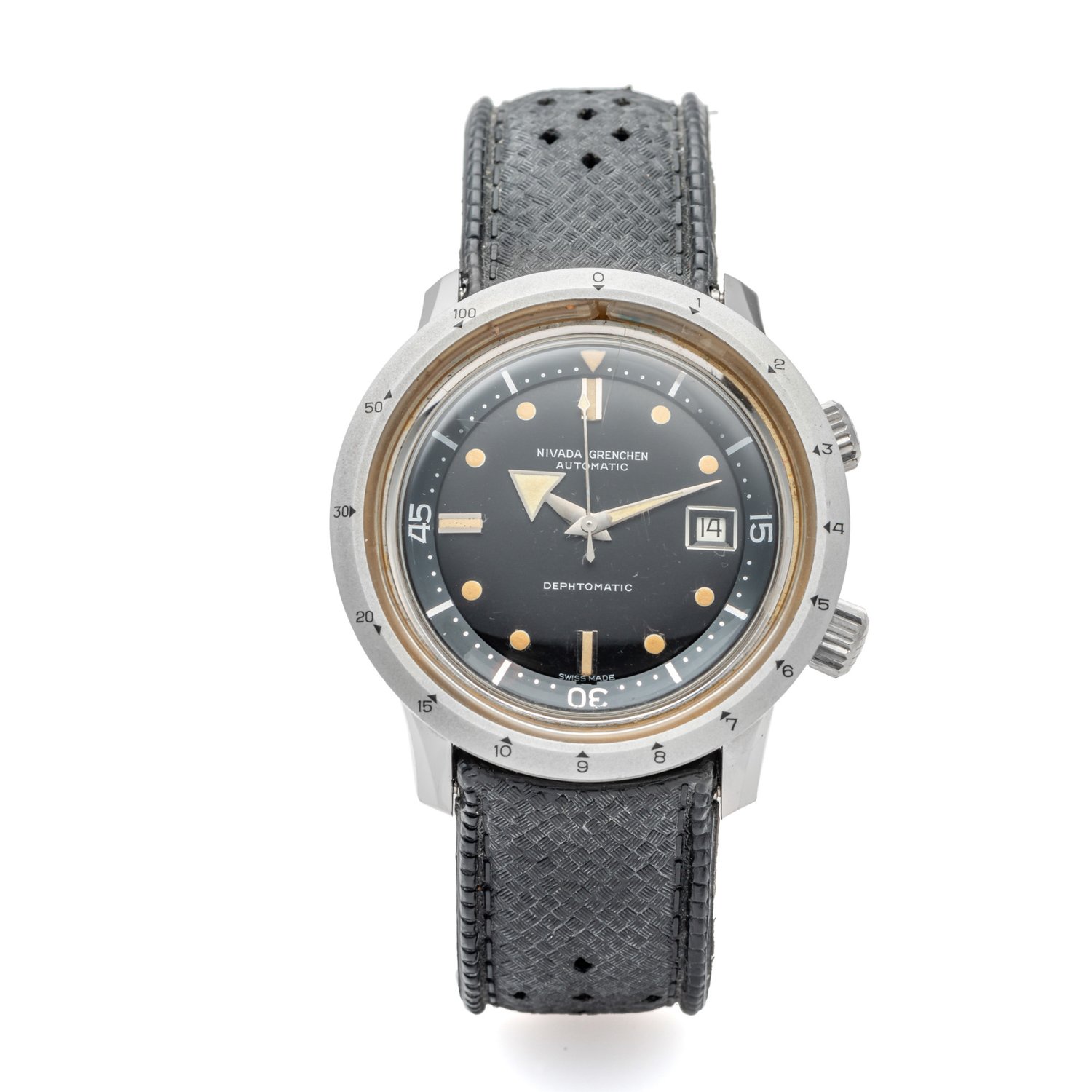
Nivada Chronomaster Aviator Sea Diver
The first Nivada Chronomaster was developed in 1963 and was fitted with the reliable movement cal. Valjoux 23. The large arrow hands were a signature feature of these early dive watches, with a production run that lasted between the years 1963 to 1970. After the year 1970, the hands were swapped with the classic stick hands. The diver’s chronograph was original water-resistant to 200 meters, though many on the pre-owned market will not suffice underwater now. There were three inscriptions on the dial of the Chronomaster watches from this period; the “Chronomaster”, “Aviator” and “Sea diver” lettering, featured above the 6 o’clock location against a black display. The Valjoux 23 column wheel movement beating inside the watch’s robust steel case, was utilised by other high-end watch brands such as Heuer and Rolex.
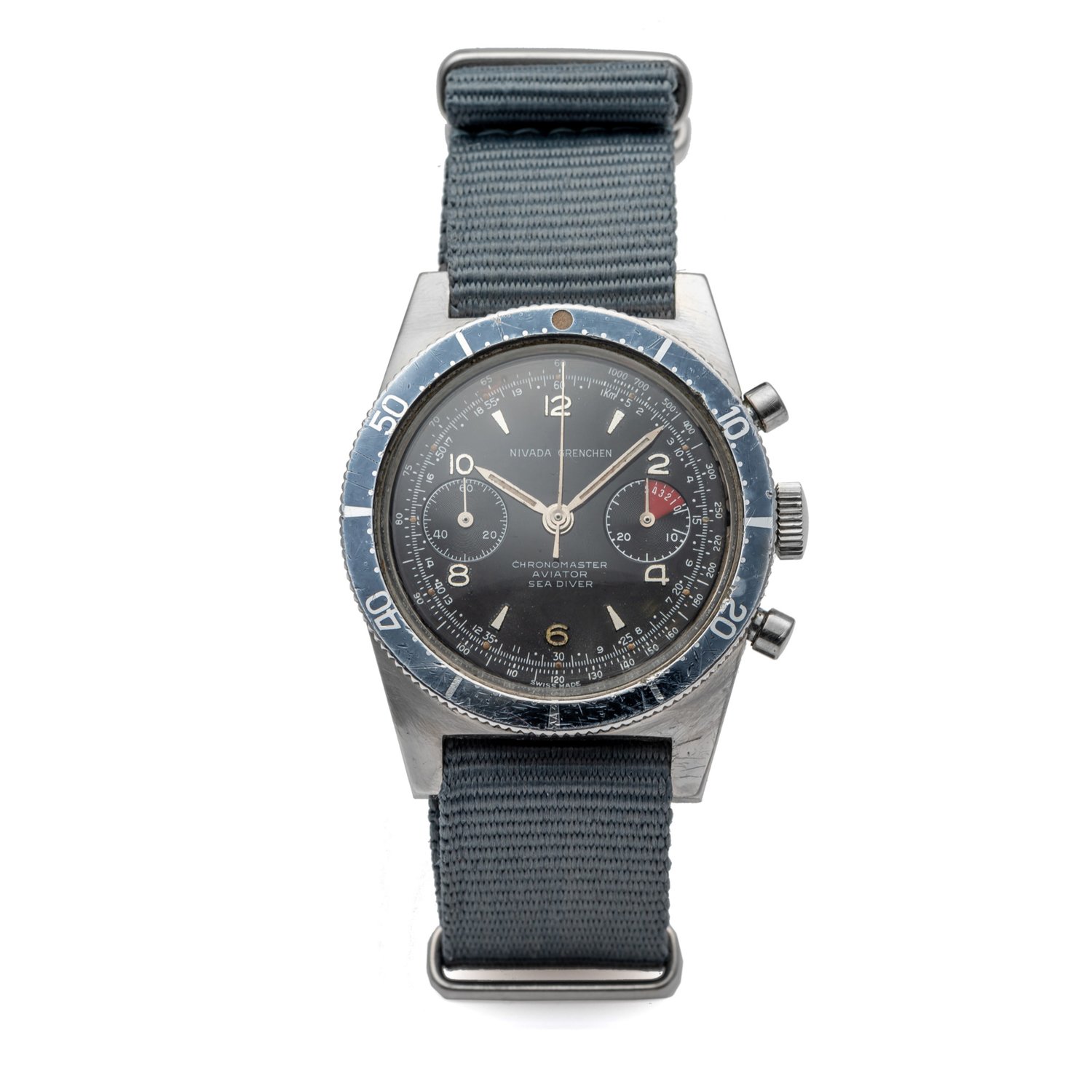
Nivada Today
Today, Nivada responds to the desires of the vintage watch collecting audience with several re-editions of these popular favourites. The Nivada Antarctic has received an enlarged case size from 34mm to 38mm and boasts the same curved lugs, polished & brushed surface finishes, and a deeply engraved golden inlay on the caseback that pays tribute to the Deep Freeze 1 Expedition. Likewise, the Nivada Chronomaster Aviator Sea Diver watch has received some updates whilst remaining true to the original DNA of the first Chronomaster watches. It features a two-register chronograph and tachymeter scale, a bi-directionally rotating bezel with both 60-minute and 12-hour scales, and a five-minute regatta timer in the 30-minute sub-dial at three o'clock. The new models marked the birth of the company, which opened its doors once again in 2018. They offer an almost identical design but have both been packed with state-of-the-art features that deem them capable of surviving the tasks and challenges associated with modern-day exploration.
